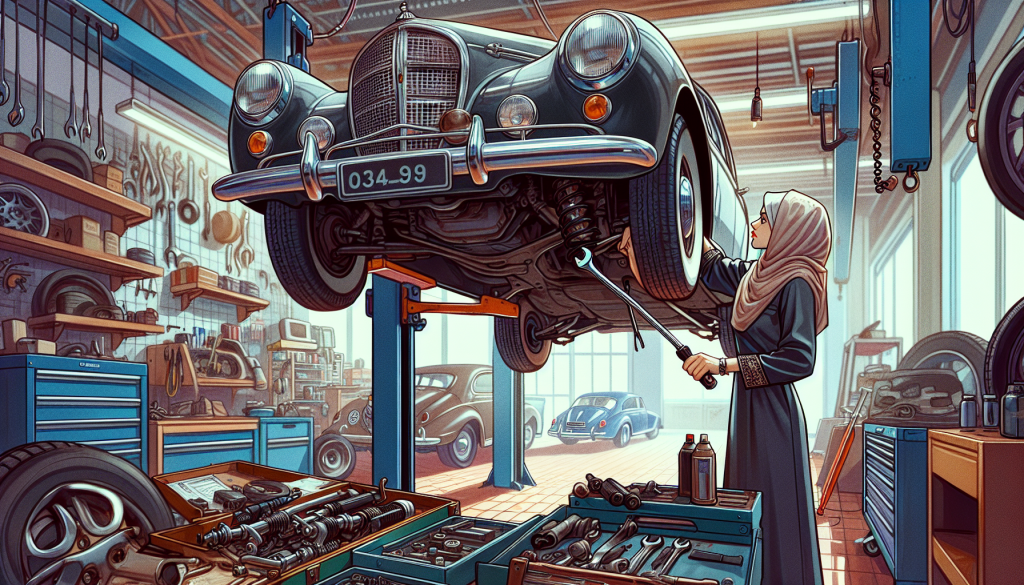Suspension Issues: Let’s Break It Down
What’s Going On With Your Suspension?
Suspension problems can really mess with how your car drives and feels. Knowing the usual suspects can help you figure out what’s wrong and fix it before it gets worse. Problems can be anything from a little misalignment to major damage that needs fixing right away.
Here are some common suspension headaches:
- Uneven Tire Wear: If your tires are wearing out unevenly, it might be because your wheels aren’t aligned right. This can mess with your camber, caster, or toe settings.
- Car Pulling to One Side: If your car keeps drifting to one side, it could be an alignment issue or uneven tire pressure.
- Too Much Bouncing: If your car feels like a trampoline, your shocks or struts might be worn out, which can mess with your handling and stability.
- Noisy Suspension: Weird clunking or squeaking noises? That could mean your suspension parts like ball joints or bushings are worn out.
- Bad Steering Response: If steering feels tough or your steering wheel is loose, it might be an alignment issue or worn-out parts.
Want to dig deeper? Check out our article on common suspension issues.
Why You Shouldn’t Ignore Suspension Maintenance
Keeping your suspension in good shape is key for a smooth and safe ride. Ignoring problems can lead to more damage, higher repair costs, and even make your car unsafe.
Here’s why timely maintenance matters:
- Better Stability: A well-maintained suspension gives you better control, especially when turning or braking.
- Longer Tire Life: Regular alignment checks can save your tires from wearing out unevenly, making them last longer.
- Safety: A good suspension system helps with handling and reduces the risk of accidents.
- Save Money: Fixing small issues early can save you from expensive repairs later.
- Comfort: Keeping your suspension in check means a smoother, more comfortable ride.
Stick to a regular suspension maintenance schedule and get professional help if you notice any problems.
| Maintenance Task | How Often |
|---|---|
| Wheel Alignment | Every 6,000 miles |
| Tire Rotation | Every 6,000 miles |
| Suspension Inspection | Every 12,000 miles |
| Shock/Strut Replacement | Every 50,000 miles |
By knowing the common suspension problems and why timely maintenance is important, you can keep your ride smooth and safe. For more tips on fixing suspension issues, check out our guide on correcting suspension issues.
Fixing Suspension Problems
Suspension issues can mess with your car’s performance and safety. Follow these steps to keep your ride smooth and your tires happy.
Regular Check-Ups
Keep an eye on your suspension with regular check-ups. Look at shocks, struts, and springs for any signs of wear, leaks, or damage.
| Task | How Often |
|---|---|
| Look Over Suspension | Every 6 months |
| Check Tire Pressure | Monthly |
| Alignment Check | Once a year or every 12,000 miles |
Using the Right Tools
Using the right tools makes diagnosing suspension problems easier. Tools like laser alignment systems and digital angle finders can help you spot issues and make precise adjustments.
For more info on tools, check out our article on suspension alignment tools.
Adjusting Camber, Caster, and Toe
Camber, caster, and toe are the big three when it comes to alignment.
- Camber: Tilt of the tires when looking from the front.
- Caster: Angle of the steering axis from the side.
- Toe: Direction tires point relative to the car’s centerline.
Adjusting these angles can fix alignment issues and improve handling. For detailed guides, see our articles on adjusting camber, adjusting caster, and adjusting toe.
Test Drive After Alignment
After making adjustments, take your car for a spin on a straight road. Look for signs of misalignment like pulling to one side or uneven tire wear.
Alignment for New Tires
Got new tires? Make sure to check the alignment. New tires can show alignment problems that old tires hid. Proper alignment helps your new tires last longer.
For more details, see our article on wheel alignment problems.
Seasonal Adjustments
Weather changes can mess with your alignment. Cold can shrink metal parts, and heat can expand them. Adjust your alignment with the seasons to keep your car running smoothly.
For more insights, visit our article on seasonal suspension alignment adjustments.
Watch Tire Wear
Tire wear can tell you a lot about your suspension. Uneven wear can mean alignment issues, worn parts, or wrong tire pressure. Check your tires regularly.
| Wear Pattern | What It Means |
|---|---|
| Uneven Wear | Misalignment |
| Bald Spots | Worn Suspension |
| Feathering | Bad Toe Adjustment |
For more on tire wear, check out our article on monitoring tire wear patterns.
Fixing Suspension Problems
Fixing suspension problems means replacing worn parts, aligning the system, and making sure everything works right. Sometimes, you might need a pro to help out.
For more solutions, visit our guide on correcting suspension issues.



